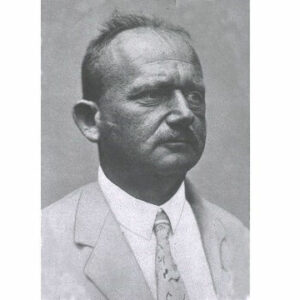Hans Fischer was a well-known organic scientist from Germany. For his work on the structure of hemin, the red blood pigment, and chlorophyll, the green pigment in plants, he was given the Nobel Prize in Chemistry. His breakthrough made it possible to synthesize hemin (the crystalline result of haemoglobin that gives blood its red color) from simpler chemical molecules with known structures. He also looked into the chemistry of hemin and chlorophyll. He has spent a lot of time researching chlorophyll synthesis. Along with this, Fischer researched carotene and porphyrin, both of which are hemin derivatives, and discovered out the structural formulas for both bilirubin, which causes jaundice, and biliverdin, which causes bruises to be yellowish in color. He examined over 60,000 chemicals under a microscope. The majority of his scientific publications were published in the journals ‘Liebigs Annalen der Chemie’ and ‘Hoppe-Seylers Zeitschrift für physiologische Chemie.’ He was not only a talented chemist, but also a very effective research institute administrator. Fischer was well-liked by his coworkers and students. Despite suffering from severe surgical TB, he was an avid hiker, skier, and motorist. Hans Fischer and Hermann Emil Fischer are remembered in the lunar crater Fischer.
Childhood and Adolescence
Hans Fischer was born on July 27, 1881, in Höchst am Main, Germany, to Dr. Eugen Fischer, Director of Kalle & Co, Wiesbaden, and Privatdozent at the Stuttgart Technical High School, and Anna Herdegen. He began his education in a primary school in Stuttgart before enrolling at Wiesbaden’s “humanistische Gymnasium” (grammar school with a focus on the classics), where he graduated in 1899.
He began studying chemistry and medicine at the University of Lausanne in 1899. Later, he was transferred to the University of Marburg, where he earned a chemistry degree in 1904 under T. Zincke. Fischer got his medical license at Munich in 1906, and he completed his M.D. under F. von Müller in Munich in 1908.
Career of Hans Fischer
Hans Fischer began his career as a chemist at the Second Medical Clinic in Munich and the First Berlin Chemical Institute, where he conducted some early research on bile pigments under the supervision of Emil Fischer. In 1911, he returned to Munich and became a lecturer in internal medicine after only a year. He worked as a physiology lecturer at the Physiological Institute in Munich from 1913 to 1916. He took over as Professor of Medical Chemistry at the University of Innsbruck from Adolf Otto Reinhold Winaus in 1916.
He was offered the chair of Medical Chemistry at the University of Vienna after two years. Fischer was a professor of organic chemistry at the Technical University of Munich from 1921 to 1945. Fischer developed porphyrin syntheses in 1926 and produced around 130 isomers.
Fischer’s breakthrough attempt of creating a synthetic hemin that could not be distinguished from natural hemin produced from hemoglobin was completed in 1929. Fischer collaborated with two collaborators on three volumes of ‘Die Chemie des Pyrrols,’ a standard work on pyrrole chemistry, between 1934 and 1940. He succeeded in synthesizing biliverdin in 1942 and the considerably more difficult synthesis of bilirubin in 1944.
Major Projects of Hans Fischer
Hans Fischer’s most important work is the synthesis of hemin, hemoglobin’s crystalline component. He split the molecule of bilirubin, a bile pigment linked to hemin, in half, resulting in a new acid containing a portion of the hemin molecule. Its structure was recognized by Fischer, who discovered that it was connected to pyrrole. He was able to artificially synthesize hemin from the structure of simpler chemicals in this way.
Achievements & Awards
He was elected a fellow of the Leopoldina Academy of Sciences in 1919. Hans Fischer was awarded the title of “Geheimer Regierungsrat” (Privy Councillor) in 1925 in appreciation of his scientific contributions. He received the Liebig Memorial Medal in 1929. Fischer was awarded the Nobel Prize for Chemistry in 1930 “for his study into the constitution of haemin and chlorophyll, particularly for his synthesis of haemin.” In 1936, Harvard University awarded him an honorary doctorate. In 1937, Hans Fischer was also awarded the Davy Medal by the Royal Society of London.
Personal History and Legacy
Wiltrud Haufe, Fischer’s wife, married him in 1935. Hans Fischer, at the age of 63, committed suicide in Munich on March 31, 1945, as a result of his depression over the destruction of his institute and his work during an allied bombing strike in the final days of World War II.
Estimated Net Worth
Hans Fischer is one of the wealthiest chemists and one of the most well-known chemists. Hans Fischer’s net worth is estimated to be $1.5 million, according to Wikipedia, Forbes, and Business Insider.


